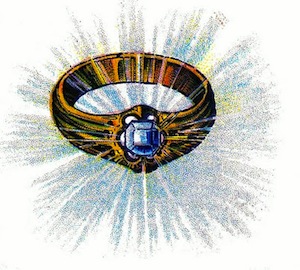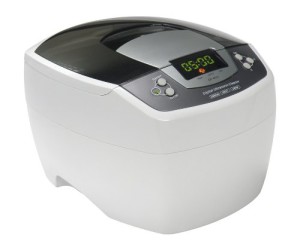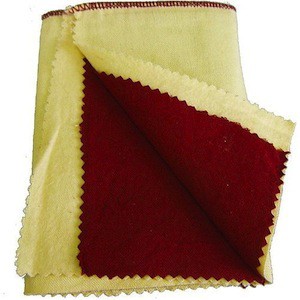 If you have rings you haven’t taken off in a while, you may notice they’ve lost their sparkle. Soap, lotion, dirt and powder leave a film that dulls the sparkle of gemstones, and we all know what happens to sterling silver.
If you have rings you haven’t taken off in a while, you may notice they’ve lost their sparkle. Soap, lotion, dirt and powder leave a film that dulls the sparkle of gemstones, and we all know what happens to sterling silver.
Any qualified jeweler can clean your jewelry, but it’s really not that difficult to do it yourself. Here are some easy, do-it-yourself methods.
• Antoinette Matlins, author of several popular gem and jewelry buying guides, including Gem Identification Made Easy, recommends cleaning fine jewelry regularly by soaking it for a few minutes in warm (not hot) water with a mild detergent, then brush gently with a soft toothbrush. Rinse thoroughly and pat dry with a lint-free cloth. I sometimes throw a couple pieces into a jar of Jewel Brite, let it soak, clean it with the little brush that comes with it and polish with an eyeglass wipe.
• How to get the sparkle back into seriously grimy rubies, sapphires or diamonds? Hot water mixed half-and-half with ammonia removes built-up grime from diamonds and corundum (rubies and sapphires), but avoid ammonia on all other gemstones.
 • Due to its unusual glass-like structure and high water content, opals are prone to cracking. Avoid exposing opal jewelry to extreme temperature changes, arid conditions and prolonged submersion in water. To keep opals from drying out, store them in a plastic bag with a damp cotton ball.
• Due to its unusual glass-like structure and high water content, opals are prone to cracking. Avoid exposing opal jewelry to extreme temperature changes, arid conditions and prolonged submersion in water. To keep opals from drying out, store them in a plastic bag with a damp cotton ball.
• If you need to clean a lot of jewelry at once, I know some people who swear by commercial ultrasonic cleaners like this(left). Matlins, however, recommends you use commercial cleaners sparingly or, better yet, stick with ionic cleaners like this one
, which are safe for all gems.
• Because silk thread can wear thin, pearls and other frequently worn beads should be restrung once a year. A rule of thumb: if you can hear your jewelry when you wear it, it’s time for a tune-up.
• Keep lotions and perfumes away from pearls since the fumes can produce a chemical reaction that will erode the pearl surfaces.
 • What to do when your metal jewelry loses its finish? If you stack gold bangles or rings, they can scratch against each other to the point of dullness. Conversely, a satin finish will polish up if you wear a piece enough. A qualified jeweler can remove scratches and refresh the finish on metal jewelry by sanding and polishing. Ask for these services when you bring your jewelry in for cleaning.
• What to do when your metal jewelry loses its finish? If you stack gold bangles or rings, they can scratch against each other to the point of dullness. Conversely, a satin finish will polish up if you wear a piece enough. A qualified jeweler can remove scratches and refresh the finish on metal jewelry by sanding and polishing. Ask for these services when you bring your jewelry in for cleaning.
• Most folks leave that one to the pros, but even this you can learn to do on your own, if one of those pros is willing to teach you. I used to occasionally touch up the brushed finish on gold wedding bands by putting them on a dowel and using high-grit sandpaper. Worked in a pinch.
• Wash sterling silver jewelry frequently in warm water with mild detergent and dry immediately to avoid spotting. To polish, you can apply a mild silver polish with a soft cloth, using a natural-bristle brush for decorative trim, buff gently and remove any remaining polish with warm sudsy water. Be gentle with oxidized silver — over-zealous cleaning can remove the finish of its deliberately blackened surface. I use a polishing cloth like this (above right) on my silver jewelry – fast, convenient and works like a charm. Wear latex gloves though because your hands will turn black quickly if you go on a polishing binge.
It’s well worth the trouble. Is there anything more satisfying that making your jewelry look like new again? I find jewelry-cleaning a very satisfying ritual.
Related posts
What you need to know about jewelry hallmarks
Related products

